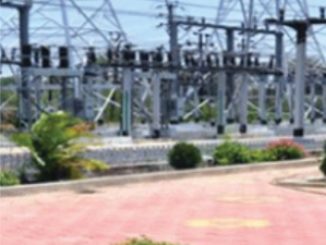
Cables are among the most essential components of a power transmission and distribution (T&D) network. In order to ensure reliable power supply across regions and to consumers, T&D utilities are taking steps to deploy new cabling technologies that offer greater resilience with lesser upkeep requirements. Underground cabling is especially witnessing a growth as smart city projects gather pace across the country. Besides being resilient to various climatic conditions, these cables are visually more aesthetic than overhead lines.
Power Line presents an account of the key cabling technologies and trends being deployed by utilities…
Underground cables
Underground cabling provides resilience in severe weather conditions, ease of network expansion in densely populated areas, and protection against theft. It comes with minimum right-of-way requirements and needs fewer clearances. However, the installation of underground cabling systems is associated with a high upfront cost, as they have to be insulated with several layers to protect them from moisture-related damage. There are also some concerns associated with the irreversible nature of these cables, as they cannot be uprated once they are commissioned. Nevertheless, underground cabling can be executed on a priority basis in areas that are vulnerable to extreme climatic contingencies. They also prevent the loss of lives through electrocution during floods, and allow for faster repair of the grid after a cyclone or a flood.
A number of underground cabling projects are under way in the country. For instance, Bangalore Electricity Supply Company Limited has planned to convert 7,250 km of overhead electricity lines, including 2,393 km of 11 kV lines, in six areas, namely, the Indiranagar, Jayanagar, Shivajinagar, Koramangala, Whitefield and Hosur Road-Sarjapur Road divisions. The project is being executed at a cost of Rs 54 billion and the Asian Development Bank has cleared a loan of $190 million for it. This project is aimed to cut the technical and commercial losses that occur due to a high number of unauthorised connections and overloading of conductors. Another major expected benefit of the project is a reduction in the number of accidents due to contact of the public with high voltage wires, leading to injuries as well as power failures. The project will be completed under different phases. As of December 2021, around 80 per cent progress has been achieved in conversion of high tension (HT) cables and nearly 83 per cent for low tension (LT) cables under Phase I while around 93 per cent progress in conversion of HT and LT cables has been achieved under Phase II.
The underground cabling works in the Kumbh area of Haridwar were completed and these cables were inaugurated in April 2021. The Rs 3.89 billion project was completed by Uttarakh-and Power Corporation Limited in one year and 10 months. It aims to provide uninterrupted power supply to Haridwar and minimise the possibility of cable snapping and power theft. Underground cabling has been done in various pockets across several cities, and Varanasi and Haridwar have been fully covered with this facility.
Further, the Delhi government is reportedly working on shifting all overhead lines underground. Around Rs 24 billion is estimated to be required for conversion of the entire existing HT overhead network to underground cables. However, the discoms in Delhi estimate that putting the entire HT overhead power network in the city underground will cost three times more than the cost of insulating it. So, about 2,264 km of bare conductor network will be converted into an insulated network.
Meanwhile, the Electricity Department of Goa plans to undertake underground cabling works in Mapusa, a town in North Goa. The cabling project is awaiting approval from the state government and is expected to entail a cost of about Rs 1.3 billon. As of August 2021, about 40 per cent of the 33 kV power line network in Goa has already been shifted underground. The electricity department of the state is also planning the conversion of overhead lines to underground cables in Vasco city and certain other areas.
Moreover, Tirupati Smart City Corporation Limited (TSCCL), in association with the Andhra Pradesh Southern Power Distribution Corporation Limited (APSPDCL), has taken up a project of laying 270 km of underground cables in the city of Tirupati. The underground cable network will cover 27 major roads and the project is expected to ensure uninterrupted power supply and reliability, as well as put an end to the cutting down of tree branches for cable repair works during the monsoon. The project will include a total of 135 km of LT underground power cables, 80 km of 11 kV lines and 65 km of 33 kV network. One-third of the city roads will be covered in the first phase of the project. The project has a total outlay of Rs 2 billion, of which APSPDCL will bear 60 per cent while 40 per cent will be borne by TSCCL. The project is scheduled to be completed by March 2022.
Technology trends
Cross-linked polyethylene (XLPE) cables are increasingly being deployed by utilities. They are essentially cross-linked polyethylene insulated aluminium conductor armoured cables. Cross-linking polymers is a process whereby polymer chains are more tightly bound together, which changes their molecular structure. The cross-linking is done by chemical or physical means through the addition of initiators such as silane or peroxide, which generate free radicals, or by subjecting the polymer to a high energy source such as high energy electron or microwave radiation.
Pure polyethylene is converted into thermosetting XLPE by cross-linking the polyethylene. This makes the insulation of the cable thermally stable, significantly increasing its melting point. XLPE insulated cables have better resistance to thermal deformation because of their higher thermal tolerance, which makes their current carrying capacity higher than that of conventional cables. Crosslinking polyethylene improves its chemical and oil resistance at higher temperatures, making it suitable for use as a low-smoke zero halogen material. These cables also offer greater tensile strength, elongation and impact resistances.
XLPE insulation also provides higher dielectric strength, resulting in low dielectric loss. These cables are thus made suitable for high voltage and extra high voltage applications up to 132 kV. XLPE cables are moisture resistant, and no precaution is required during jointing and termination. They also have higher resistance to salinity of water in the ground, chemicals, oils and corrosive fumes.
Several new cables have also been developed for specific application areas. For instance, solar cables are designed to suit the specific purpose of evacuating solar energy from photovoltaic (PV) modules. They are composites of several insulated wires enveloped by an outer jacket. They are designed to handle high ultraviolet (UV) radiation and high temperatures, and are weather resistant. Usually, they are installed outside or within the solar panels. The cables are connected on the direct current (DC) side of the system. Cables that connect individual PV modules in a string to form a PV generator are called string cables. The main DC cable connects the generator junction box to the inverter. The PV energy is in DC form with low voltage and high current, resulting in principle differences for DC cables. The DC cables connecting the modules, as well as those connecting the generator connection box and the solar power inverter, are two-core cables consisting of a current carrying wire, typically a live red wire, and a negative blue wire. Both are surrounded by an insulation layer.
Meanwhile, e-beam cross-linked cables have the advantages of increased life, higher temperature resistance, higher current carrying capacity, improved physical properties and reduced thickness. They also prevent fires caused by overloads or short circuits and thus save precious lives and property. Other benefits include high resistance to media (oils, fuels, acids and alkalis), UV and ozone. The cables are halogen-free and flexible, and have optimised weight and volume. They are used in steel mills, electric overhead travelling cranes, ships and generating stations.
Other emerging cable types include warm and cryogenic dielectric cables. Warm dielectric cables contain a conductor made from high temperature superconducting (HTS) wires wound around a flexible hollow core. Through this core, liquid nitrogen flows, cooling the HTS wires to the zero-resistance state. The conductor is surrounded by conventional dielectric insulation. Meanwhile, cryogenic dielectric cables have a coaxial configuration consisting of an HTS conductor cooled by liquid nitrogen flowing through a flexible hollow core and an HTS return conductor cooled by circulating liquid nitrogen. This is an improvement over the warm dielectric design and provides greater ampacity, further reducing losses and entirely eliminating the need for dielectric fluids.
Net, net, a number of cabling technologies are available for utilities to upgrade and expand their T&D networks, and many new technologies are being developed by the industry to meet the evolving needs of the T&D segment.



